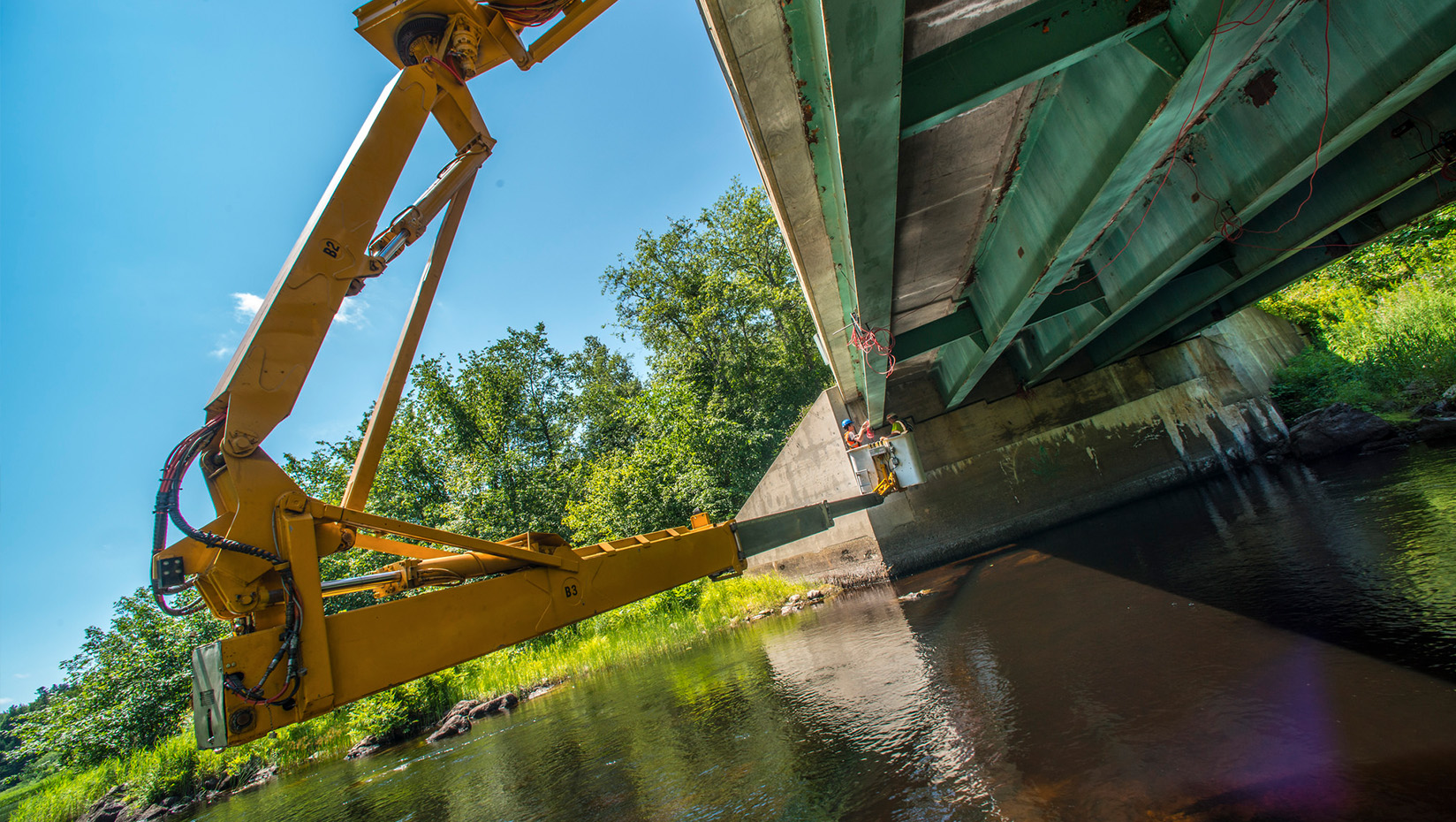
Building bridges for the future
Without a sound, safe and efficient transportation infrastructure, Bill Davids says we wouldn’t have an economy.
“That truck that just drove over this bridge carrying goods to wherever wouldn’t be able to make its trip; the ambulance wouldn’t be able to get to your house; you wouldn’t be able to get to work in the morning,” says Davids, the John C. Bridge Professor and chair of the Civil and Environmental Engineering Department at the University of Maine.
“Imagine if it was just you and your feet, or you and your horse. What would the world be like?” he asks.
The Maine Department of Transportation (DOT) has teamed up with the University of Maine Advanced Structures and Composites Center to find new and innovative ways to evaluate aging bridges around the state.
The team of engineers is attaching sensors to bridges to take live load readings and deflection measurements to determine the strength of bridges, their lifespans and whether they can allow heavier trucks in the future.
“For the Maine Department of Transportation, the potential savings are very large. We are able to take that data in real time and apply it to damage models of the structures. So not just civil infrastructure projects, like the bridge behind me, we are also able to apply it to buildings, to energy infrastructure, water infrastructure and roadways,” says Scott Tomlinson, research engineer in the Advanced Structures and Composite Center at UMaine.
Researchers will share information they gather with consulting engineers who work for DOT and eventually with the wider engineering community.
The project also will allow for more targeted use of tax dollars in replacing and improving infrastructure that needs it, says Tomlinson, who came to UMaine as a visiting undergraduate researcher in 2001 and now is pursuing his Ph.D. in civil engineering, also at UMaine.
“There are a lot of bridges all across the country and in Maine that are slated to be either repaired or replaced because we don’t know exactly how strong they are,” says Andrew Schanck, an undergraduate civil engineering student at UMaine. “This project will help with that.”
The Pittsfield, Maine native is helping evaluate the strength of the bridges, and how different materials respond to certain stressors. By live load testing the bridges, they are looking at how girders, or support beams, and the concrete slabs within the bridge interact in a composite way, rather than independently.
Having the materials work in a composite fashion could increase the longevity of bridges, factor into the load rating of bridges, and save the state money.
These variables are not classically taken into account when evaluating a bridge, but knowing this information can help engineers plan for the future, explains Schanck.
“If we know that the materials are working in a composite way, we can say, ‘OK, we have this much more strength in this bridge,’ or going forward we can design a bridge with a little less concrete or a little less steel because we know that the composite action will be helping in our favor,” Schanck says.
The project could decrease infrastructure costs and provide advancements in the field that will have significant impacts on our society as a whole, he says.
“The wireless sensors we are using here and the quality of information we get out of these advanced systems are far beyond what we could have done even a few years ago,” Davids says.
Another goal of the project is to involve undergraduate and graduate students in hands-on projects that allow them to apply their classroom knowledge in the field to make an impact on infrastructure in the state.
“Without engineers, our daily lives would be vastly different. A growing economy needs engineering in nearly every aspect. Everything from infrastructure, automobiles, phones, electrical power — you name it, engineers are behind that,” Davids says. “UMaine’s role in training the next generation of engineers is absolutely essential.”
Contact: Amanda Clark, 207.581.3721
From UMaine News.
